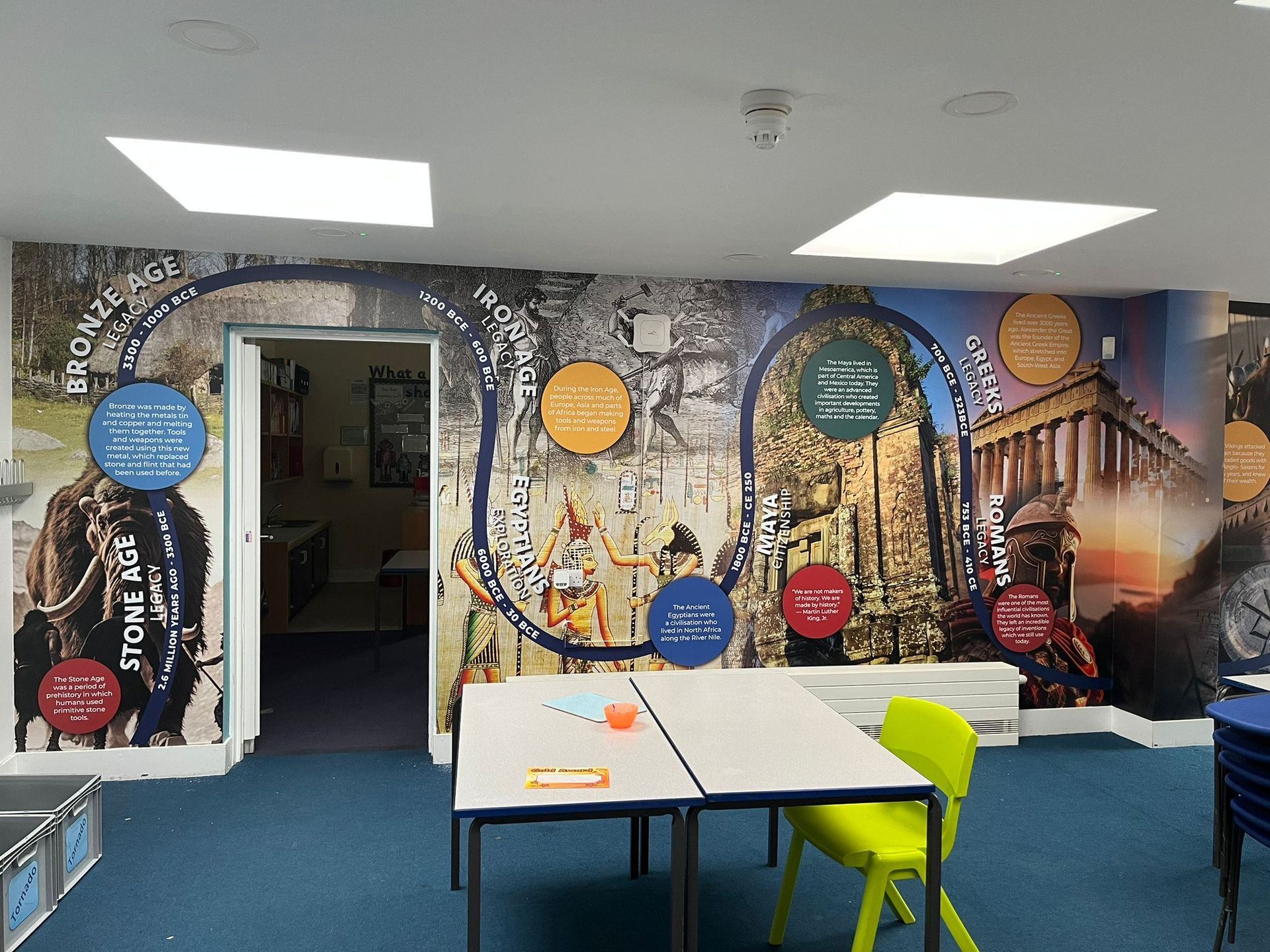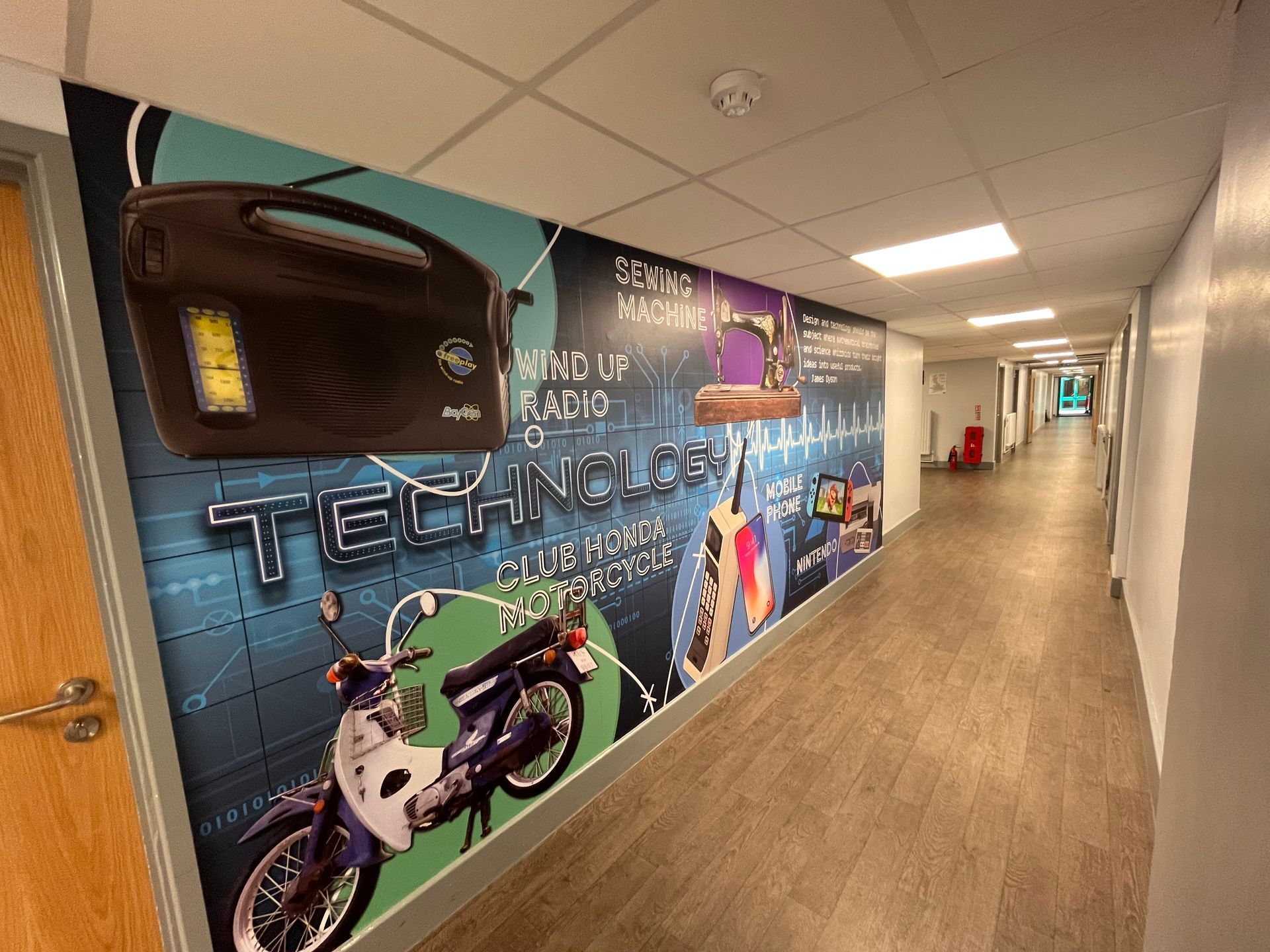Impact on pupils 25
Enhancing the learning process through wall graphics can create an engaging and dynamic educational environment. Here's how you can incorporate elements into wall graphics to promote learning;

Augmented Reality (AR) Integration;
Educational AR Content;
- Utilise AR technology to showcase 3D models and animations that bring subjects like biology, physics and history to life. For instance, a wall graphic depicting the system can display planets in motion when viewed through an AR application.
Interactive Timelines;
- Develop AR-enhanced timelines or historical narratives that offer layers of information and context when scanned with a device.
Gamified Learning;
- Integrate QR codes or markers into the graphics for quizzes, puzzles or scavenger hunts. Completing these activities could unlock insights or virtual rewards.
Virtual Excursions;
- Design wall visuals that act as gateways to field trips, enabling students to explore museums, historical landmarks or natural wonders through AR experiences.

Sensor-Based Interactivity
1. Touch-Sensitive Panels:
- Hands-On Learning: Incorporate touch-sensitive panels within wall graphics that respond to touch. For example, touching a part of a human body diagram could display information about that organ or system.
- Interactive Maps: Design maps which students can touch to learn about each region's geography, culture, or historical events.
Multisensory Engagement:
- Integrate light and sound elements that react to student interaction. This can create interactive stories or lessons that change based on student input.
- Feedback Mechanisms: Provide immediate audio or visual feedback when students interact with the graphics, reinforcing learning through positive reinforcement.
Implementation Strategy
Collaborative Design Process:
- Stakeholder Input: Students, teachers, and administrators should be involved to ensure that the design process and the interactive elements align with educational goals and preferences.
- Pilot Programs: Start with pilot programs in a few classrooms or areas to test and refine the interactive features before a wider rollout.
Technology Integration:
- AR Development: Partner with AR developers to create custom applications that integrate seamlessly with the wall graphics. Ensure these apps are user-friendly and accessible to all students.
- Interactive Materials: To ensure longevity and functionality, use high-quality interactive materials such as dry-wipe paint, touch-sensitive panels, and durable AR markers.
Training and Support:
- Teacher Training: I'd like to provide teachers with training sessions on effectively using interactive elements in their lessons. I'd also offer ongoing support and resources to help them integrate these tools into their teaching strategies.
- Student Orientation: Educate students on using the interactive features responsibly and creatively, encouraging them to explore and engage with the content.
Feedback and Evaluation:
- Continuous Improvement: Implement a feedback system to gather input from students and teachers on the effectiveness and usability of the interactive features. Use this feedback to make constant improvements.
- Success Metrics: Define success metrics and regularly evaluate the impact of the interactive wall graphics on student engagement and learning outcomes.
By incorporating these interactive elements into wall graphics, schools can transform ordinary walls into powerful educational tools that foster a more engaging, hands-on learning experience.










